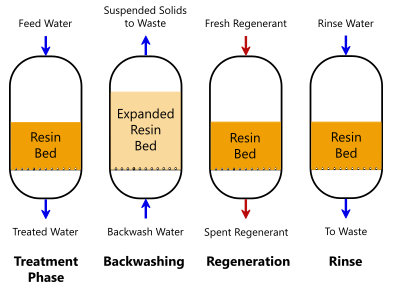How M270 Waste Management Help in the Management of Hazardous Materials
How M270 Waste Management Help in the Management of Hazardous Materials
Blog Article
Cutting-edge PFAS Treatment Solutions for Safer Water
The enhancing prevalence of PFAS contamination in water products requires a critical examination of cutting-edge therapy remedies. Advanced filtration modern technologies and novel chemical therapies present appealing avenues for decreasing these persistent contaminants. Furthermore, arising bioremediation techniques provide an even more sustainable approach to tackling PFAS difficulties. As regulatory frameworks remain to adjust, understanding the efficiency and scalability of these options becomes critical. What implications do these advancements hold for public health and ecological reconstruction, and how can stakeholders successfully implement them in varied contexts?
Overview of PFAS Contamination
PFAS contamination has become a significant environmental and public health issue. Per- and polyfluoroalkyl substances (PFAS) are a team of artificial chemicals known for their determination in the setting and human body, leading them to be generally described as "for life chemicals." These substances have actually been commonly utilized in numerous markets, including firefighting foams, water-repellent fabrics, and food product packaging, primarily because of their water- and grease-resistant properties.
The extensive use PFAS has led to their discovery in soil, water materials, and even in the blood of people and animals. Researches have linked PFAS direct exposure to many wellness issues, including developmental results in infants, immune system dysfunction, and numerous forms of cancer. Additionally, the ecological determination of these substances complicates their deterioration and elimination, elevating worries concerning long-lasting ecological influences.
Governing bodies are significantly executing rigid standards to keep track of and decrease PFAS degrees in drinking water and other environmental mediums. As recognition of PFAS contamination expands, it has actually become imperative for neighborhoods and sectors to seek efficient treatment options to mitigate exposure and secure public health.
Advanced Filtering Technologies
As the necessity to resolve PFAS contamination magnifies, advanced filtering technologies have actually arised as a critical component in the remediation efforts focused on eliminating these persistent chemicals from water sources. These innovations leverage innovative systems to properly target and catch PFAS compounds, which are notoriously resistant to standard treatment methods.
Among one of the most appealing approaches is the use of granular triggered carbon (GAC), which adsorbs PFAS molecules because of its high surface location and permeable framework. This approach has actually been extensively applied in both community and industrial setups, demonstrating considerable decreases in PFAS concentrations. Furthermore, ion exchange resins have obtained grip, especially created to precisely bind PFAS ions from water, hence facilitating their elimination.
Membrane filtering innovations, such as reverse osmosis and nanofiltration, likewise show effectiveness in PFAS removal by literally dividing pollutants from water - pfas management. These systems can attain high levels of purity, making them suitable for alcohol consumption water applications
Chemical Therapy Innovations
Many chemical treatment advancements are being checked out to efficiently attend to PFAS contamination in water products. One appealing technique entails the usage of sophisticated oxidation procedures (AOPs), which use powerful oxidants such as ozone, hydrogen peroxide, or chlorine dioxide integrated with UV light to break down PFAS compounds right into less dangerous materials. This method has shown effectiveness in laboratory settings, revealing potential for scalability in real-world applications.
Another cutting-edge method is the advancement of ion-exchange resins especially created to target PFAS. These materials can precisely adsorb PFAS substances from water, go to the website permitting their removal during therapy processes. Recent advancements have enhanced the effectiveness and ability of these materials, making them a beneficial alternative for water therapy centers.
In addition, researchers are examining making use of chemical agents like persulfate and ferrous ions to boost the deterioration of PFAS in contaminated water. These agents can generate chemical reactions that assist in the break down of consistent PFAS substances.
Emerging Bioremediation Techniques
Current advancements in chemical therapy advancements have actually led the way for checking out bioremediation methods as a viable choice for attending to PFAS contamination. Bioremediation uses the all-natural metabolic processes of microbes to break down or change toxins, making it an appealing strategy for dealing with persistent pollutants like PFAS.
Emerging methods in bioremediation consist of making use of genetically engineered microbes that can especially target and break down PFAS compounds. These microbial strains are being developed for their improved destruction capabilities, boosting the efficiency of the remediation procedure. In addition, researchers are investigating the potential of plant-assisted bioremediation, where particular plant types may uptake and sequester PFAS from polluted soil and Extra resources water.
One more appealing strategy is the application of bioaugmentation, which includes presenting beneficial microorganisms right into polluted settings to boost the degradation of PFAS. This technique can facilitate quicker removal timelines and enhance overall effectiveness.

Governing Structures and Specifications
A thorough regulatory framework is important for effectively taking care of PFAS contamination and guaranteeing public health defense. The boosting recognition of per- and polyfluoroalkyl substances (PFAS) as ecological contaminants has prompted various government and state firms to create criteria that govern their visibility in water supplies. The United State Environmental Protection Company (EPA) has actually developed health advisories and is working towards establishing enforceable limits for PFAS in alcohol consumption water.
State-level regulations differ considerably, with some states taking on stricter standards than those recommended by the EPA. These policies commonly consist of maximum pollutant degrees (MCLs) for details PFAS compounds, tracking demands, and reporting obligations for water utilities. Additionally, emerging frameworks concentrate on the remediation of contaminated sites, stressing the demand for reliable treatment technologies.

Final Thought
In verdict, the development and implementation of cutting-edge PFAS treatment remedies are crucial for addressing the prevalent issue of water contamination. Advanced purification innovations, chemical informative post therapies, and arising bioremediation techniques jointly present a complex strategy to properly decrease and break down PFAS degrees. As regulatory structures proceed to evolve, integrating these technologies will be important to safeguard public health and bring back the stability of infected water resources, inevitably adding to a cleaner and much safer setting.
Report this page